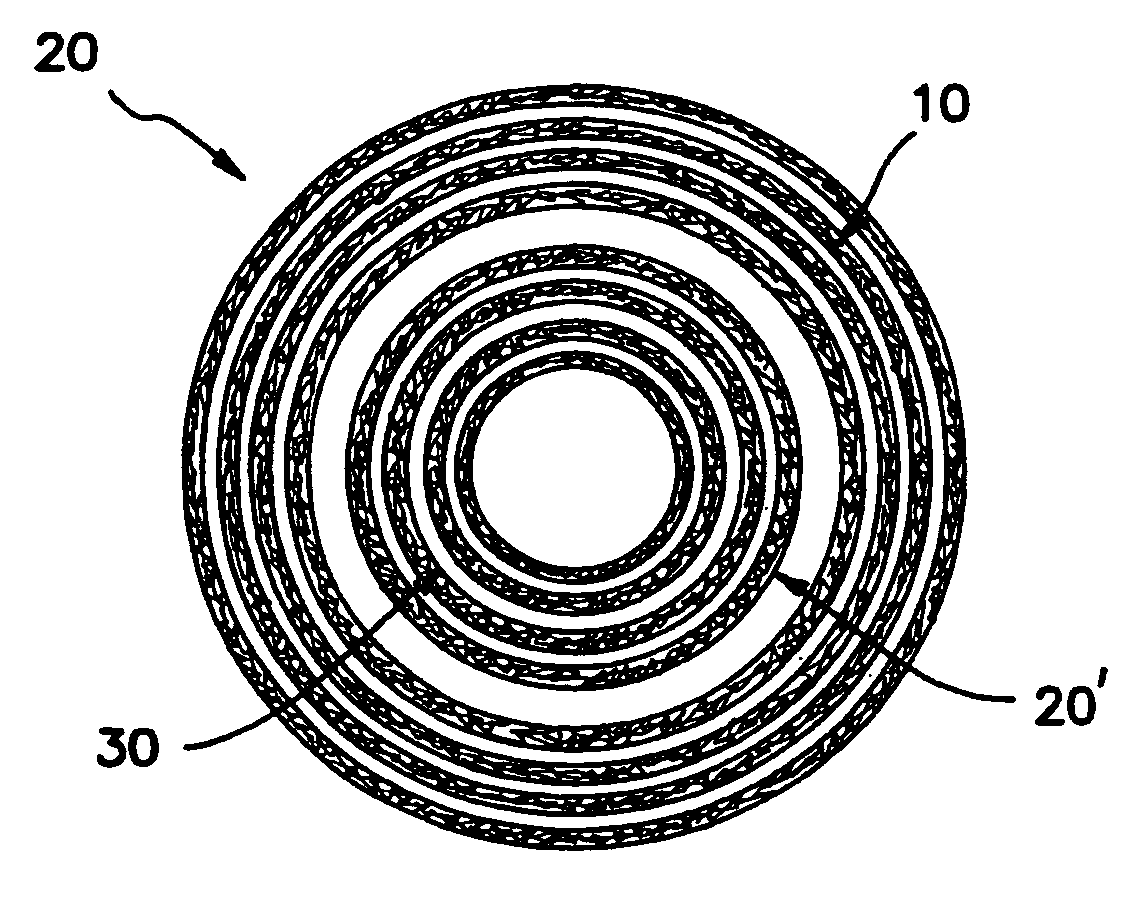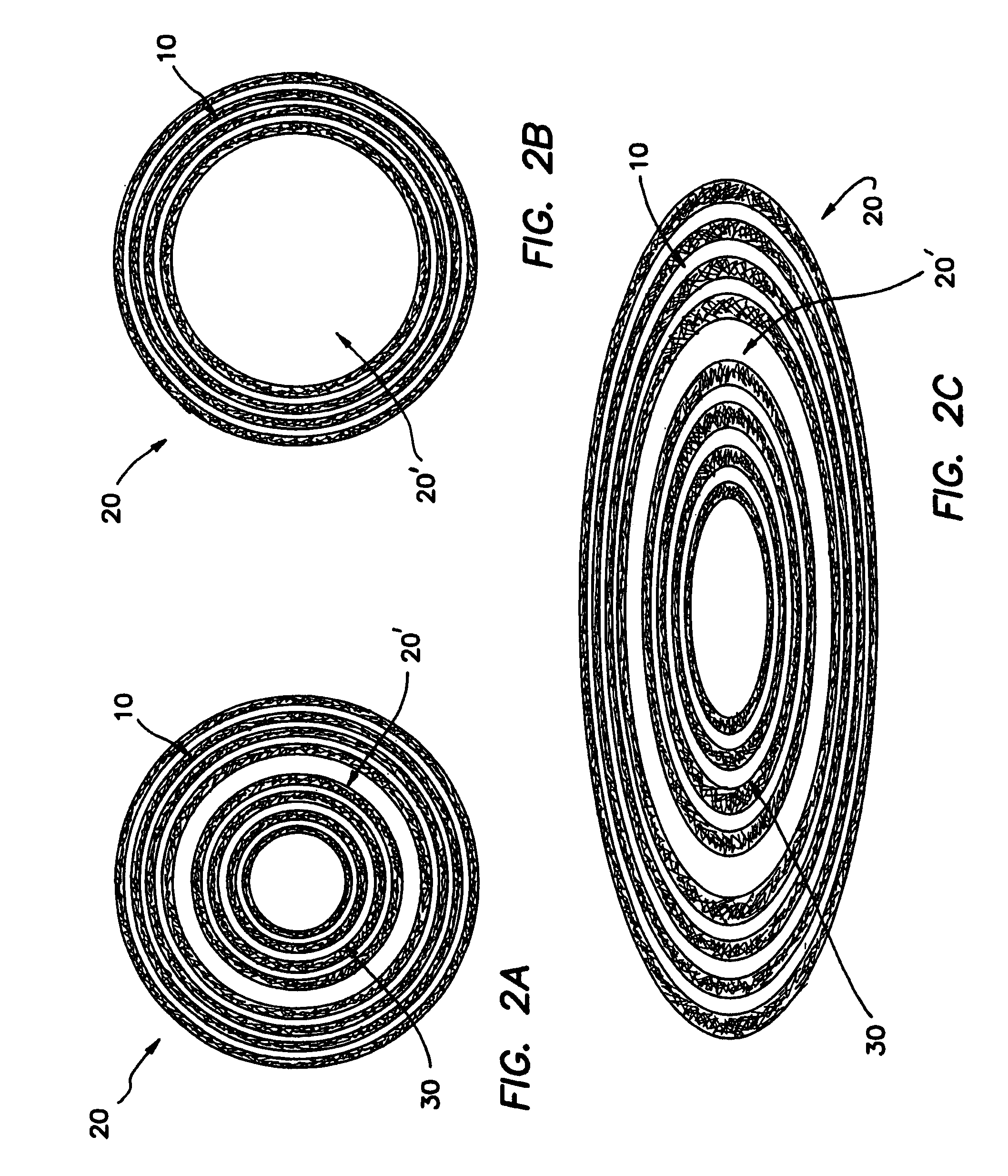Radial Bragg ring resonator
a ring resonator and bragging technology, applied in the field of ringlike cavities, can solve the problems of high loss, difficult to achieve these characteristics simultaneously, and small fsr, and achieve the effects of small bending radii, low loss, and large fsr
- Summary
- Abstract
- Description
- Claims
- Application Information
AI Technical Summary
Benefits of technology
Problems solved by technology
Method used
Image
Examples
Embodiment Construction
[0034]FIGS. 1A–1C are diagrams which illustrate the prior art ring resonator structure. FIGS. 1A and 1B are top plan view diagrams which show structures utilizing, respectively, a ring resonator 100 and a disk resonator 102. FIG. 1C is a perspective diagram which shows a structure utilizing circular resonator 104 and a multi-layer approach such as described in “Vertically Coupled Glass Microring Resonator Channel Dropping Filters”, B. E. Little et al., IEEE Photonics Technology Letters vol. 11 no. 2, Feb. 1999, p. 215–217.
[0035]Referring to FIGS. 2A–2D, the resonator 20 according to the invention is illustrated by example in several embodiments in top plan view. In the embodiment of FIG. 2A, resonator 20 comprises a plurality of external Bragg reflectors 10, a guiding channel 20′ and a plurality of internal Bragg reflectors 30. In the embodiment of FIG. 2B, resonator 20 comprises a plurality of external Bragg reflectors 10 and a guiding core or channel 20′. In the embodiment of FIG....
PUM
 Login to View More
Login to View More Abstract
Description
Claims
Application Information
 Login to View More
Login to View More - R&D
- Intellectual Property
- Life Sciences
- Materials
- Tech Scout
- Unparalleled Data Quality
- Higher Quality Content
- 60% Fewer Hallucinations
Browse by: Latest US Patents, China's latest patents, Technical Efficacy Thesaurus, Application Domain, Technology Topic, Popular Technical Reports.
© 2025 PatSnap. All rights reserved.Legal|Privacy policy|Modern Slavery Act Transparency Statement|Sitemap|About US| Contact US: help@patsnap.com



